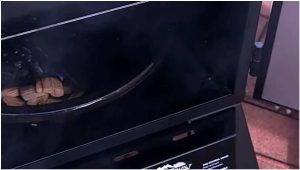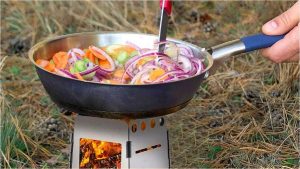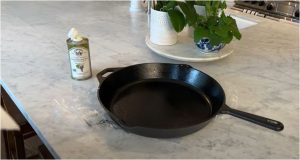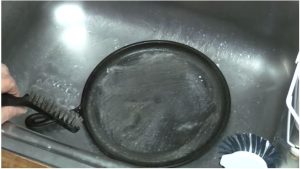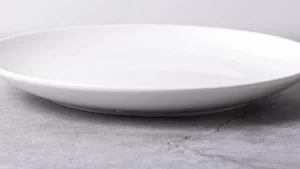Best Solar Ovens for Camping, Emergencies & Off-Grid Living
Note: This article may contain affiliate links, which means if you make a purchase following our links won’t cost you extra, but we may earn a commission. Learn more
Finding the best solar oven depends on intended use, efficiency, and portability. High-quality solar ovens for home use often feature durable insulation, large cooking chambers, and stable heat retention for baking and roasting. Camping models prioritize lightweight, foldable designs with quick heat absorption.
The most efficient solar ovens use reflective panels to maximize sunlight, reaching temperatures suitable for slow cooking or boiling water. Some designs include built-in thermometers for precise temperature control.
- Best Choice: Energy Wise Premium Solar Oven

For those interested in DIY solutions, materials like reflective foil and insulated boxes can improve performance.
Solar ovens eliminate the need for fuel, making them eco-friendly for outdoor adventures or emergency preparedness. Proper positioning in direct sunlight ensures optimal results.
1. All-Season Solar Cooker Camper – Efficient and Portable
The All-Season Solar Cooker Camper is a high-performance solar oven designed for outdoor enthusiasts, campers, and eco-conscious users. With its lightweight yet durable construction, this cooker harnesses sunlight to boil, bake, or steam food efficiently without requiring fuel. Its adjustable reflector panels maximize heat absorption, reaching temperatures up to 300°F (149°C), making it ideal for slow cooking.
This solar cooker is compact and foldable, perfect for backpacking, picnics, or emergency preparedness. The weather-resistant materials ensure long-term durability, while its simple setup allows for hassle-free cooking. Whether you’re preparing a stew, roasting vegetables, or baking bread, this cooker delivers consistent results while reducing your carbon footprint.

Key Benefits
- Portable and foldable design
- Reaches up to 300°F for versatile cooking
- No fuel required, eco-friendly
- Durable and weather-resistant
Compatible For
- Camping and backpacking
- Emergency cooking
- Off-grid living
Special Note: Always position the cooker in direct sunlight for optimal performance.
2. Energy-Wise Portable Solar Oven – Reinforced and Foldable
The Energy-Wise Portable Solar Oven is a heavy-duty solar cooker built for reliable outdoor cooking. Its reinforced aluminum frame enhances durability, while the foldable design ensures easy transport and storage. The oven can heat up to 285°F (140°C), making it great for grilling, baking, and reheating meals.
This model features a large cooking chamber, allowing you to prepare multiple dishes at once. The insulated interior retains heat efficiently, reducing cooking time. Ideal for RV trips, beach outings, and survival kits, this oven operates without electricity or gas, making it a sustainable choice. The included thermometer helps monitor temperature for precise cooking.

Key Benefits
- Sturdy aluminum frame for longevity
- Large capacity for family meals
- Integrated thermometer for control
- Fuel-free operation, energy-efficient
Compatible For
- RV and car camping
- Picnics and outdoor events
- Disaster preparedness kits
Special Note: Avoid using in shaded areas for best results. Secure the oven on flat surfaces to prevent tipping.
3. MrMapMax Portable Solar Oven – Compact with Thermometer
The MrMapMax Portable Solar Oven is a versatile and efficient cooking solution for hikers and minimalists. With a 4.5L capacity, it’s spacious enough for soups, meats, and baked goods. The built-in thermometer ensures accurate temperature monitoring, while the reflective interior boosts heat retention.
This oven is lightweight and collapsible, fitting easily into a backpack or travel gear. It heats up quickly, reaching up to 250°F (121°C), perfect for slow-cooked meals. The BPA-free materials make it safe for food preparation, and its easy cleanup adds convenience. Whether you’re camping or hosting a backyard BBQ, this oven delivers flavorful, sun-cooked dishes.

Key Benefits
- Compact and travel-friendly
- Includes thermometer for precision
- BPA-free, non-toxic materials
- Fast heat absorption
Compatible For
- Backpacking and hiking
- Small family meals
- Sustainable living setups
Special Note: Requires direct sunlight for effective cooking. Not recommended for use in extreme weather conditions.
4. Teenyyou Portable Solar Oven – Multi-Purpose and Lightweight
The Teenyyou Portable Solar Oven is a flexible and eco-friendly cooker designed for quick meals and composting. Its lightweight, foldable structure makes it great for picnics, beach trips, and emergency use. The oven can steam, bake, or reheat food efficiently without power.
With a simple setup, this oven is user-friendly for beginners. The heat-resistant materials ensure safety, while the spacious interior accommodates different meal sizes. It’s also compost-friendly, allowing you to reduce waste while cooking. Perfect for eco-warriors and outdoor lovers, this oven combines functionality and sustainability.

Key Benefits
- Ultra-light and foldable
- Multi-functional cooking
- Compost-friendly design
- No electricity needed
Compatible For
- Quick outdoor meals
- Composting food waste
- Educational solar projects
Special Note: Best used in sunny conditions. Keep away from sharp objects to avoid material damage.
What Is the Best Solar Oven for Home Use?
Finding the best solar oven for home use depends on efficiency, capacity, and ease of operation. Solar ovens designed for households should retain heat effectively, offer ample cooking space, and work well in varying sunlight conditions.
High-quality home solar ovens often feature insulated chambers to maintain consistent temperatures. Models with adjustable reflectors maximize sunlight absorption, allowing you to bake, roast, or steam food without electricity. Some units include built-in thermometers for precise temperature control.
For family-sized meals, look for ovens with larger cooking chambers. Durable materials like stainless steel or reinforced plastic ensure longevity. Brands like Sun Oven and GoSun offer reliable options with high heat retention and user-friendly designs.
Key factors to consider:
- Heat retention (minimum 250°F for effective cooking)
- Cooking capacity (fits pots or baking trays)
- Portability (if moving between backyard and patio)
- Weather resistance (for long-term outdoor use)
A well-chosen solar oven can reduce energy bills and provide eco-friendly cooking solutions.
How to Choose the Most Efficient Solar Oven
Efficiency in a solar oven depends on insulation, reflector design, and heat absorption. The best models minimize heat loss while maximizing sunlight conversion.
Insulation quality determines how well the oven retains heat. Double-walled designs with thermal barriers perform better in cooler climates. Reflective panels should be adjustable to track the sun, boosting cooking temperatures.
Key efficiency indicators:
- High reflectivity (mirror-finish panels work best)
- Sealed cooking chamber (prevents heat escape)
- Fast heat-up time (reaches 200°F+ within 30 minutes)
Portable solar ovens like GoSun Fusion use vacuum tube technology for rapid heating. Larger models such as All-American Sun Oven excel in slow-cooking meals.
DIY Solar Oven: How to Build the Best Homemade Design
Building a DIY solar oven is simple with the right materials. You will need:
- Cardboard box or wooden frame
- Aluminum foil or reflective sheets
- Glass or clear plastic lid
- Black paint or dark cooking pot
- Insulation (newspaper, foam, or wool)
Step-by-step guide:
1. Select a sturdy box – A pizza box works for small ovens, while a larger wooden frame suits family-sized cooking.
2. Line the interior with foil – This reflects sunlight into the cooking area.
3. Insulate the walls – Use crumpled newspaper or foam to trap heat.
4. Paint the cooking tray black – Dark surfaces absorb more heat.
5. Cover with a transparent lid – Glass or thick plastic retains warmth while letting sunlight in.
6. Angle reflectors for maximum sun exposure – Adjustable panels improve efficiency.
A well-built DIY oven can reach 200-250°F, enough for slow cooking and baking.
Solar Oven vs. Traditional Cooking: Benefits and Limitations
Solar ovens offer fuel-free cooking, reducing reliance on gas or electricity. They are eco-friendly, producing zero emissions, and work well in off-grid situations.
Benefits:
- No fuel costs – Uses free solar energy
- Low maintenance – Fewer moving parts than stoves
- Safe operation – No open flames or gas leaks
Limitations:
- Weather-dependent – Less effective on cloudy days
- Longer cooking times – Slower than conventional ovens
- Limited temperature control – Harder to achieve high heat
Traditional cooking methods are faster and more consistent, but solar ovens excel in sustainability and emergency preparedness.
How to Install a Solar Oven
Before setup, ensure you have:
- A flat, stable surface
- Direct sunlight access
- Adjustable reflectors (if included)
Step-by-step installation:
1. Position in full sunlight – Avoid shaded areas for best performance.
2. Angle reflectors toward the sun – Maximizes heat absorption.
3. Preheat for 20-30 minutes – Lets the oven reach optimal temperature.
4. Place food inside securely – Use dark-colored pots for faster cooking.
Solar Oven Maintenance Tips
Keeping a solar oven in good condition ensures longevity and efficiency.
- Clean reflectors regularly – Dust and dirt reduce reflectivity.
- Check insulation for wear – Replace damaged thermal barriers.
- Store in a dry place – Prevents moisture damage.
- Inspect seals and hinges – Ensures no heat escapes.
Proper care extends the oven’s lifespan and maintains peak performance.
5 Practical Uses for a Solar Oven
Slow-Cooking Meals
Ideal for stews, soups, and casseroles, solar ovens provide even, low-temperature heating.
Baking Bread and Desserts
With steady heat, you can bake bread, cookies, and cakes without an electric oven.
Pasteurizing Water
A solar oven can heat water to safe temperatures, useful in emergencies.
Dehydrating Fruits and Vegetables
Low, consistent heat works well for drying food for preservation.
Reheating Leftovers
An efficient way to warm meals without using electricity.
Essential Solar Oven Tips for Better Results
Optimal Sun Positioning
Adjust the oven every 30-60 minutes to follow the sun’s movement.
Preheating Is Key
Let the oven warm up before adding food for faster cooking.
Use Dark, Thin-Walled Cookware
Black pots absorb heat better, while thin metal conducts it faster.
Cut Food into Smaller Pieces
Reduces cooking time by increasing surface area.
Monitor Weather Conditions
Avoid using the oven on overcast or windy days for best results.
Read Also:
